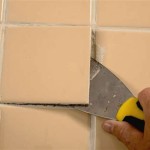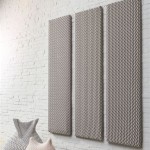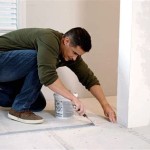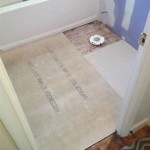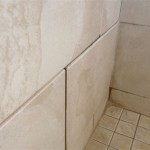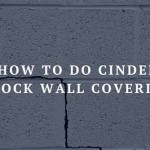Can I Install Vinyl Flooring Over Ceramic Tile? A Comprehensive Guide
The question of installing vinyl flooring over existing ceramic tile is a common one among homeowners considering a floor renovation. Opting to install vinyl directly over tile can potentially save significant time and resources compared to a full tile removal. However, the suitability of this method depends heavily on several factors that must be carefully evaluated before proceeding.
A successful vinyl installation over ceramic tile hinges on proper preparation, material selection, and adherence to best practices. Ignoring these factors can lead to unsatisfactory results, including uneven surfaces, compromised vinyl integrity, and ultimately, the need for costly rework.
Assessing the Existing Ceramic Tile
The first and perhaps most crucial step is thoroughly assessing the existing ceramic tile floor. This assessment will determine whether it is a viable candidate for vinyl overlay. Key considerations include the condition of the tiles, the evenness of the surface, and the potential for moisture issues.
The tiles should be firmly adhered to the subfloor, with no loose or cracked tiles. Loose tiles must be re-secured or replaced before proceeding. Cracked tiles, even if seemingly minimal, can create stress points and ultimately telegraph through the vinyl flooring, causing damage and an uneven surface over time.
Evenness is another critical factor. Uneven tiles, whether due to lippage (where one tile sits higher than an adjacent tile) or variations in tile thickness, will need to be addressed. These imperfections will be visible and potentially damaging to the vinyl if not properly leveled. A completely flat and smooth surface is essential for a successful vinyl installation.
Finally, moisture problems are a major concern. If the existing tile is in an area prone to moisture, such as a bathroom or kitchen, it is imperative to ensure that the underlying subfloor is dry and free from leaks. Moisture trapped beneath the vinyl can lead to mold growth, adhesive failure, and ultimately, the deterioration of both the vinyl and the underlying tile and subfloor. A moisture test is highly recommended to determine the presence of any hidden moisture issues.
Preparing the Tile Surface for Vinyl Installation
Once the existing tile has been deemed suitable, the next step involves preparing the surface for the vinyl flooring. This preparation is critical for ensuring proper adhesion and a smooth, level finished floor. The primary focus is on cleaning, leveling, and priming the tile surface.
Thorough cleaning is essential to remove any dirt, grease, or residue that may interfere with the vinyl adhesive. A strong degreasing cleaner should be used, followed by a thorough rinsing with clean water. It is important to allow the floor to dry completely before proceeding to the next step.
Leveling the surface is often the most labor-intensive part of the preparation process. Any significant unevenness between tiles, lippage, grout lines or imperfections needs to be addressed with a leveling compound. Self-leveling underlayment is a common choice for this purpose, as it flows easily to create a smooth, even surface. The leveling compound should be applied according to the manufacturer's instructions, paying close attention to drying times.
When using self-leveling compound, it's vital to address grout lines. Grout lines can potentially be visible through the vinyl, even after applying the leveling compound. Several thin coats of leveling compound might be necessary to fully fill the grout lines and create a truly smooth surface. Alternatively, a grout filler or skim coat can be applied before the overall leveling compound application.
Priming the leveled surface is the final step in the preparation process. A primer helps to improve the adhesion of the vinyl flooring to the prepared surface. The primer should be selected based on the type of vinyl flooring being used and applied according to the manufacturer's recommendations. This step is often overlooked, but it is crucial for ensuring a long-lasting and durable vinyl floor.
Selecting the Appropriate Vinyl Flooring
The type of vinyl flooring chosen will significantly impact the success of the installation over ceramic tile. Not all vinyl flooring products are equally suitable for this application. Considerations include the thickness of the vinyl, its flexibility, and the type of adhesive required.
Thicker vinyl flooring options, such as luxury vinyl plank (LVP) or luxury vinyl tile (LVT), are generally better suited for installation over tile. The added thickness provides more cushioning and helps to minimize any imperfections in the underlying tile surface. Thinner sheet vinyl may be more prone to telegraphing any unevenness in the tile below.
The flexibility of the vinyl is also a factor. A more rigid vinyl plank or tile will be less likely to conform to minor imperfections in the tile surface. However, a vinyl that is too flexible might be more susceptible to indentation or damage from heavy furniture or foot traffic.
The choice of adhesive is critical. The adhesive must be compatible with both the vinyl flooring and the prepared tile surface. It should provide a strong bond and be resistant to moisture. Pressure-sensitive adhesives are often used for vinyl planks and tiles, while a full-spread adhesive may be required for sheet vinyl. Always consult the vinyl flooring manufacturer's recommendations for the appropriate adhesive.
Furthermore, consider the wear layer of the vinyl flooring. The wear layer is the top protective layer that resists scratches, stains, and fading. A thicker wear layer will provide better durability and longevity, especially in high-traffic areas. Selecting a vinyl flooring product with an appropriate wear layer is essential for ensuring that the floor will withstand the demands of daily use.
Another consideration is the method of installation. Some vinyl planks and tiles feature a click-lock system, which allows them to be installed without adhesive. These floating floors can be a good option for installing over tile, as they allow for some movement and can help to minimize telegraphing. However, it is still important to properly prepare the tile surface before installing a floating floor.
Sheet vinyl, on the other hand, typically requires full adhesive application. This method can provide a seamless and waterproof surface, but it also requires a perfectly smooth and level subfloor. Any imperfections in the tile surface will be visible through the sheet vinyl.
Prior to any installation, it is best practice to lay out the vinyl flooring to acclimate to the room, usually for about 48-72 hours. This allows the material to adjust to the room's temperature and humidity, reducing any future expansion or contraction.
When installing vinyl flooring over ceramic tile, consider the transition areas. These are the areas where the vinyl flooring meets other flooring types, such as carpet or hardwood. It is important to install transition strips to create a smooth and safe transition between the different flooring surfaces. These transition strips should be securely fastened to the subfloor and should be selected to complement the vinyl flooring.
In summary, installing vinyl flooring over ceramic tile can be a cost-effective and time-saving solution for floor renovation. However, it requires careful assessment of the existing tile, thorough preparation of the surface, and the selection of appropriate vinyl flooring products. By following these guidelines, homeowners can achieve a beautiful and durable vinyl floor that will last for years to come.
Proper installation of vinyl flooring over ceramic tile also requires the consideration of potential height differences that this installation method can create. Adding a layer of vinyl flooring on top of existing ceramic tile will inevitably raise the floor height. This change in height can pose challenges at doorways, transitions to other rooms with different flooring, and around appliances. In such situations, careful planning is needed to ensure that doors can still swing freely and that there are no tripping hazards.
One way to address height differences is to use transition strips. These strips are designed to bridge the gap between two different flooring surfaces with varying heights. They are available in a variety of materials, colors, and styles to match the vinyl flooring. Transition strips should be securely fastened to the subfloor to prevent them from moving or becoming a tripping hazard.
Another option is to undercut door jambs and trim. This involves using a saw to cut away a small portion of the jamb or trim, allowing the vinyl flooring to slide underneath. This creates a seamless transition and eliminates the need for a transition strip. However, undercutting door jambs and trim requires careful execution to avoid damaging the surrounding surfaces.
When installing vinyl flooring around appliances, such as refrigerators and dishwashers, it is important to ensure that there is sufficient clearance. The increased floor height may prevent appliances from being easily moved or serviced. In some cases, it may be necessary to raise the appliance or adjust the surrounding cabinetry to accommodate the new floor height.
Finally, it is important to consider the long-term implications of installing vinyl flooring over ceramic tile. While this method can be a convenient and cost-effective solution, it is not always the best option. The underlying ceramic tile can trap moisture, which can lead to mold growth and adhesive failure. Additionally, the added layer of flooring can make it more difficult to access plumbing or electrical wiring beneath the floor in the future. Homeowners should carefully weigh the pros and cons of this method before making a decision.

New Vinyl Plank Flooring Over Tile Table And Hearth

New Vinyl Plank Flooring Over Tile Table And Hearth

What Type Of Flooring Can You Install Over Ceramic Tile

Should You Install Vinyl Floor Over Tile

New Vinyl Plank Flooring Over Tile Table And Hearth

Can You Install Vinyl Plank Over Tile Flooring America

Lvt Flooring Over Existing Tile The Easy Way Vinyl Floor Installation Diy

How To Lay Vinyl Flooring Sheet Over Tiles

How To Lay Tile Over An Existing Vinyl Floor Today S Homeowner

How To Install Ceramic Tile Over Vinyl Flooring
Related Posts

